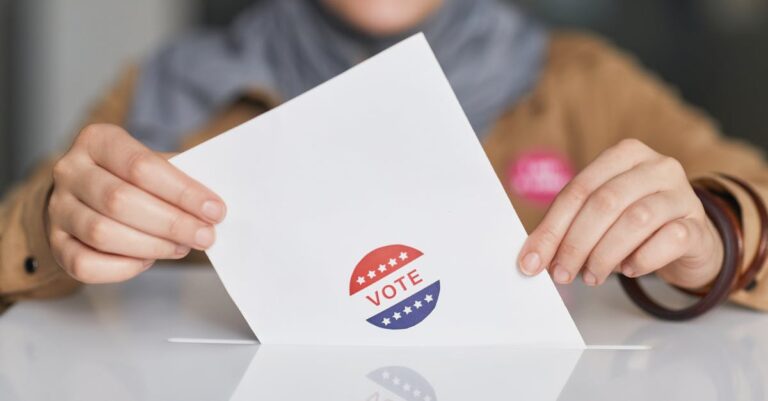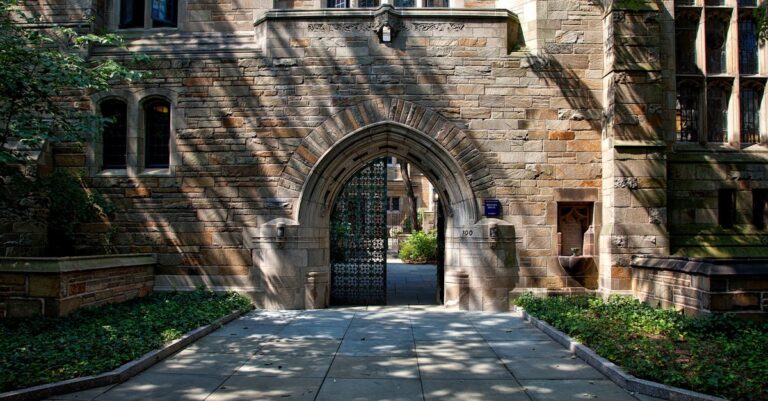
Public school attendance statistics are a vital metric for understanding student engagement and success. However, beneath the surface of these seemingly straightforward numbers lies a complex web of political dynamics, particularly in North Florida’s Saint Johns and Flagler Counties. What may appear as simple data on paper can be fraught with unexpected arguments and controversies that reveal a deeper insight into the region’s educational landscape.
In the realm of public schools, attendance statistics hold significant weight as they are often used to allocate resources, determine funding, and assess the effectiveness of educational programs. To many, these figures provide a clear picture of student participation and overall school performance. However, delving further into the analysis of attendance data can uncover a range of unexpected arguments that speak to larger issues at play.
One of the primary points of contention surrounding attendance statistics in North Florida, particularly in Saint Johns and Flagler Counties, revolves around the influence of politics on reporting accuracy. In a region where school funding and resources are closely tied to attendance numbers, there is a heightened incentive for schools and districts to manipulate or inflate their statistics. This manipulation can lead to an inaccurate representation of student engagement and achievement, ultimately impacting the quality of education provided.
Moreover, the intersection of politics and education in North Florida introduces additional complexities to the interpretation of attendance statistics. Political agendas, allegiances, and rivalries can shape the way data is collected, analyzed, and disseminated, further muddying the already intricate landscape of public school attendance reporting. As a result, what may seem like a straightforward measure of student presence can become a battleground for competing interests and narratives.
In Saint Johns and Flagler Counties specifically, the debate over attendance statistics takes on a unique dimension due to the diverse socio-economic makeup of the communities. Disparities in wealth, access to resources, and educational opportunities can skew attendance numbers, painting an incomplete picture of student engagement and performance. Addressing these inequalities requires a nuanced approach that takes into account the underlying social and economic factors that impact school attendance.
Navigating the unexpected arguments surrounding public school attendance statistics in North Florida’s Saint Johns and Flagler Counties necessitates a critical examination of the political, social, and economic forces at play. By acknowledging and addressing these complexities, educators, policymakers, and stakeholders can work towards a more accurate and comprehensive understanding of student attendance and achievement in the region. Only by confronting the unexpected arguments head-on can we begin to ensure that all students have equal access to quality education and opportunities for success.






Attendance is super important to know. The numbers can be tricky tho. Schools gotta be honest about who’s really there. It’s not just about the money, it’s about giving every kid a fair shot at a good education. So let’s all pay attention
Well, ain’t that just dandy? Who knew that attendance stats could be so thrilling? I mean, who doesn’t love a good old political drama mixed in with their education data, am I right? But hey, at least we’re all getting a crash course in navigating the treacherous waters
Wow, this is so interesting! Who would have thought that public school attendance stats could be so political? I never realized that there could be so much manipulation behind the numbers. It’s kinda scary to
I think that paying attention to school attendance is a big deal. It tells us lots about
wow this is some fancy talk about school numbers! i never knew attendance stats could be so tricky. it’s important for everyone to understand what’s really going on behind the scenes. they gotta make sure all kids get a fair shot at a good education, no matter where they live. kudos to the folks trying to untangle this mess in North Florida!
yo, so like, public school attendance is super important, ya know? it tells us a lot about how engaged students are and if they’re doin’ good in school. but in North Florida, like Saint Johns and Flagler Counties, there’s all this drama goin’ on behind the scenes. it’s like,
Yo, so like, this blog post is all about public school
Wow, so like, attendance numbers are super duper important for schools,
Hey y’all, wow this blog post really makes ya think about all the stuff that goes on behind
Ha ha, so like, attendance numbers in schools, right? They’re like, supposed to be straightforward but then it turns into a whole political drama in North Florida. Who knew counting kids could be so complicated, am I right? Like, can’t we all just agree that kids should show up to school and learn stuff without all this drama?
OMG i had no idea that attendance stats in schools could be so intense in North Florida! Like,
Woah, this blog got me thinking about public school attendance in North Florida, especially in Saint Johns and Flagler Counties. Attendance stats are like a big deal, you know? They decide how much money schools get and how well they’re doing. But it’s not all simple like it seems. There’s some shady stuff going on with politics and school data manipulation that messes things up. And like, the socio-economic stuff in those areas adds another layer of complication to the whole attendance picture. It’s like a puzzle that needs solving to make sure every student gets a fair shot at a good education. Time to dig deep and figure
It’s important to keep an eye on attendance statistics in schools, especially in areas like Saint Johns and Flagler Counties in North Florida where there are some tricky political dynamics at play. These numbers don’t always tell the full story and there might be some funny business going on behind the scenes. By looking deeper into these stats, we can see how they’re influenced by politics and social issues which can impact the quality of education students receive. It’s crucial for educators and policymakers to understand these complexities so they can work towards a fair and accurate system that benefits all students.
Yeah, school attendance numbers can be like trying to solve a Rubik’s Cube blindfolded – you think you’ve got it all figured out, but then suddenly you’re in a whole different dimension of political intrigue and controversy. It’s like a reality TV show, but instead of drama between housemates, it’s drama between school districts. Who knew
Wow, this blog really makes you think about how attendance numbers in schools can be all twisty and turny, especially in North Florida. It’s like a whole drama behind the scenes with politics and stuff messing with the data. Who knew just looking at who’s showing up for class could be so intense? It’s like a whole spy movie but with
Hey y’all, did you hear about the drama with attendance statistics in North Florida? It’s like a reality TV show up in there! Who knew numbers could cause so much chaos? Maybe we should start a new show called “Keeping Up with the Attendance Stats” – I bet it would be
OMG, attendance statistics and politics in schools? That’s like mixing oil
Well, well, well, who knew school attendance statistics could be so spicy? 🌶️ It’s like a soap opera in Saint Johns and Flagler Counties with all that political drama behind the scenes! 💃 But hey, at least we know those numbers aren’t just sitting there twiddling their thumbs – they’re
I think these numbers are important to look at because they tell us about how students are doing in schools. But sometimes there can be problems with how the numbers are reported because of politics. In places like Saint Johns and Flagler Counties in North Florida, where schools get money
OMG this is so crazy, like who knew attendance stats could be so intense? It’s like a whole drama unfolding behind the scenes in those Saint Johns and Flagler Counties. Like, can you imagine all the politicky stuff messing with numbers? Schools trying to make themselves look better by messing with attendance? That’s not cool, man. Kids deserve better than
Ugh, like why do we even gotta deal with all this political drama when all we wanna know is if students are showing up to school or not? Can’t they just give us the facts without all the manipulation and agendas getting in the way? It’s so unfair to the kids who just wanna learn and get a fair shot
OMG, so like, attendance stats are supes important, but like, who knew they could be so dramatic? It’s like a soap opera with school funding and political rivalries in North Florida. Who knew counting heads could be so intense? But for real, we gotta figure out how to make sure all the kiddos get a fair shake at education, even if it means wading through the crazy mix of politics and numbers. Keep calm and count on, I guess!
Wow, so like, public school attendance numbers, they’re so important, you know? But in North Florida, like in Saint Johns and Flagler Counties, there’s a whole bunch of craziness behind the
Wow, this thing about public school attendance is super important! School data can help us see if students are doing well and if schools need more stuff to help them learn. But, like, in North Florida, there’s a lot of drama
Wowza, this blog post really opened my eyes to the tricky world of public school attendance stats in North Florida. It’s crazy how politics can mess with something as basic as counting who’s showing up for school! But it makes sense – if money and resources are on the line, people might try to make the numbers look better than they are. And it’s not just about the numbers, it’s about the real kids who might not be getting the help they need because of all this jibber jabber.
I think it’s important for everyone involved to really
wow this is so interesting. i never thought about how much politics can mess with school attendance numbers. i think everyone should have a fair shot at education no matter where they live. it’s kinda sad that some places might not be getting the resources they need because of this. we really need to make sure all students get what they need to succeed. i hope they figure this
Public school attendance is like, super important, you know? It’s like a big deal for figuring out how well students are doing and stuff. But like, in North Florida’s Saint Johns and Flagler Counties, it’s not just about the numbers, man. There’s like this whole political
Public school attendance statistics are so important! They help us see how the students are doing and if they are going to school. And the numbers can show if the schools have enough money and if the programs are working right. But sometimes, the numbers might not be telling us the whole story. In North Florida, especially in Saint Johns and Flagler Counties, there are lots of arguments about the accuracy of the attendance data. Apparently, politics can mess things up and make the numbers not so accurate. It’s like a big old mess with school funding
yeah i think attendance in schools be important but in north florida it’s like a whole drama with politics and stuff, especially in them saint johns and flagler counties, they playing games with the numbers for money and resources and it ain’t right. and then you got all this politics mixing in with education, making it more confusing than it needs to be. the rich areas and
Well, I think the attendance stats in public schools in North Florida are super important, ya know
I think it’s important to really look at those numbers, you know? They might not always tell the full story. Like, you gotta consider all the stuff that’s going on behind the scenes, especially with politics and money involved. It’s like a big puzzle that needs all the pieces to make sense. And hey, shoutout to Max Fischer for the cool photo! It’s all about understanding the big picture and making sure every student gets a fair shot at a good education, man.
Public school attendnace is like super important for like knowing how kids are doing in school, but like in North Florida, in Saint JOhns and Flagler Counties, it can get like all political and stuff. There’s like all these numbers and stats that might not be like telling the real story, you know? It’s like the schools and stuff might be messing with the numbers to get more money and things. And then there’s like this whole political side to it, where people are like using the data to push their
Wowza, all this talk about attendance statistics in North Florida has got me thinking – do they count it as attendance if you’re physically present
Attendance statistics and politics in schools?! Who knew it was such a mess? Schools should be about learning, not playing political games. And how can we trust any of the numbers with all this manipulation going on? It’s like a big puzzle with missing pieces, and we’re just left scratching our heads trying to figure it all out. This whole thing makes my brain hurt!
Ugh, like seriously, attendance statistics?? Who even cares about that stuff when there’s real issues at play here! Like, why are we focusing on numbers instead of actually helping students learn and succeed? It’s so frustrating how politics always has to mess everything up, even something as simple as attendance data. Can’t we just focus on making
OMG, like, education is so important, you know? I mean, those numbers and stuff, they tell us so much about what’s going on in schools. But then there’s all this other stuff happening underneath, like politics and money and things. It’s like a big puzzle, but we gotta figure it out for the
Haha, so you’re telling me that attendance statistics are like a big messy bowl of spaghetti in North Florida! It’s like trying to untangle a bunch of yarn that a cat got into – so many twists and turns, you don’t know where it’s gonna end up! But hey, at least we’re all in it together, trying to figure out how to
OMG, like, attendance stats in schools are sooooo important, you know? But then, like, all this drama in North Florida with the numbers and stuff, it’s like whoa! Politics messing things up, can’t they just chill? Schools need resources, not mind games! And, like, these numbers don’t even show the whole picture – some kids have it tougher, man. We
Wow, that’s a whole lot of info about school attendance stats in North Florida! It’s crazy how something as simple as counting who’s in
Haha, y’all ever think about how attendance stats can be like a wild rollercoaster ride through a jungle of politics and drama? Like, imagine trying to count all those students and then having to deal with sneaky schools trying to beef up their numbers for more money! It’s like a real-life soap opera, but instead of love triangles, we got data manipulation and funding disputes. Who knew crunching numbers
Haha, so let me get this straight – attendance statistics in North Florida are like a messy bowl of spaghetti, all tangled up with political drama and sneaky maneuvers? Sounds like those numbers need a good
Wow this blog post is really informative. I never knew that attendance stats were so important in schools. It’s crazy to think that politics can mess with the numbers like that. We gotta make sure all students have a fair shot at education, y’know? Shoutout to Max Fischer for the cool photo too
woah man dis is some heavy stuff! like who woulda thunk that school attendance stats had so much drama behind ’em? like, it’s crazy to think that politics and money can mess with something as basic as kids goin’ to school. but hey, we gotta be aware of this stuff,
Wow, this is some deep stuff about school attendance and politics in North Florida! It’s crazy
Wow, this blog really makes you think about all the stuff going on behind the scenes with school attendance numbers. It’s like a whole drama unfolding in North Florida, who knew? Like, you think numbers are just numbers, but really they’re tied to
I do not know much about politics but I know that education is important. It seems like attendance numbers can be tricky and people might mess with them for money? That is not very cool. We should make sure all students get a good education no matter where they live. It is important to think about the social and economic stuff that might make it hard for some
Why these schools in North Florida’s Saint Johns and Flagler Counties gotta be so shady with their attendance stats?! Like, come on, just give us the real numbers so we can know what’s really going on with our kids’ education! It’s not cool that politics and money are messing with the accuracy of this important information. Students deserve better than this manipulation and hidden agendas